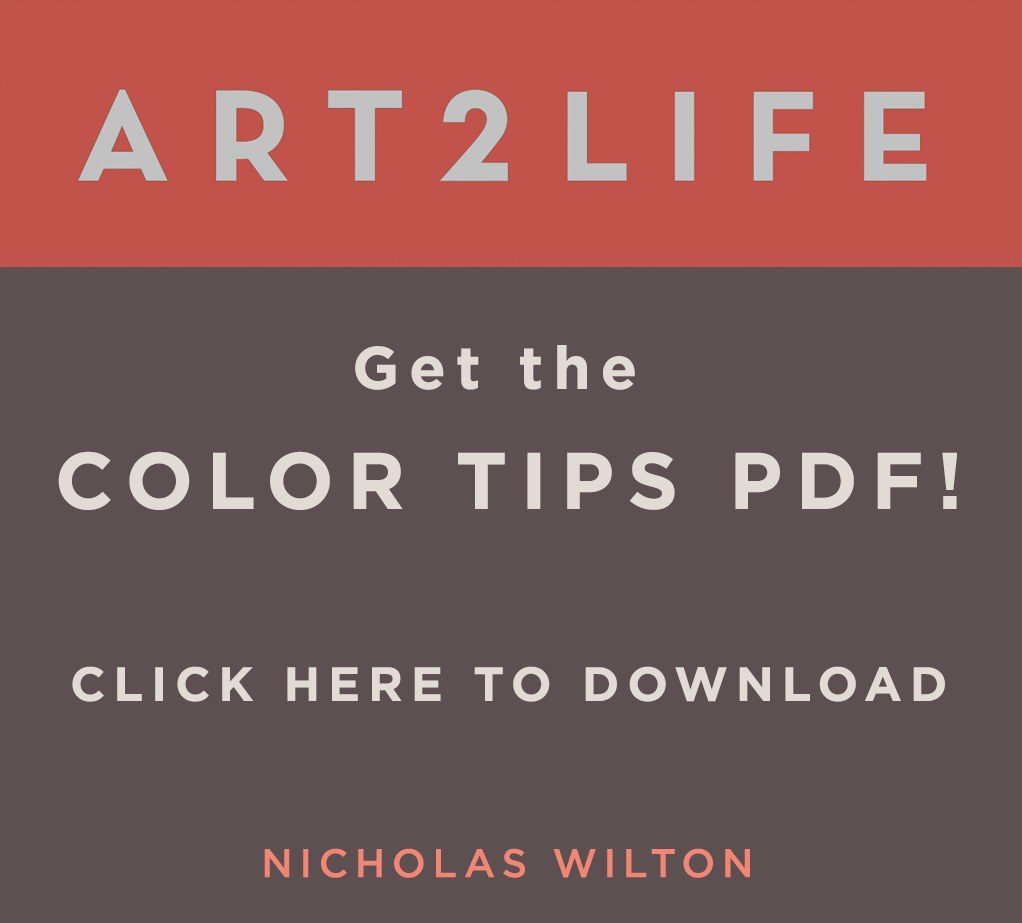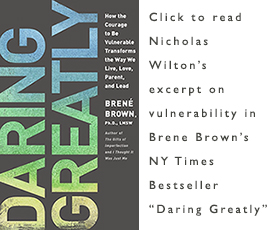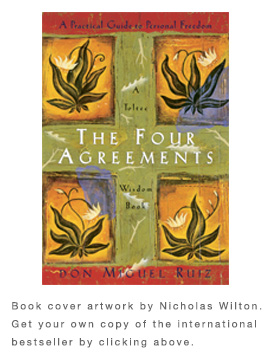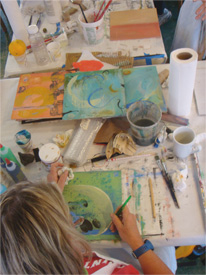
How Creative Expression Improves Your Health
When I get super busy, one of the first things to go is my exercise regime. I usually try and run or do a cross fit workout before I even get to the studio. The thinking goes that I will be in a better frame of mind and therefore will be able to make stronger work. My art will turn out better. And I will be just happier. Maybe this is all just a justification for playing outside, but actually I always believed that my running was linked directly to the quality of my creative expression.
Over the past few months I have been making a whole new body of work for an upcoming show in NYC. I unfortunately fell so far behind during this time that my exercise schedule became fractured. I just simply did not have enough time. At first I thought this would make everything more difficult and that my mood would spiral downward along with my paintings I was trying to create.
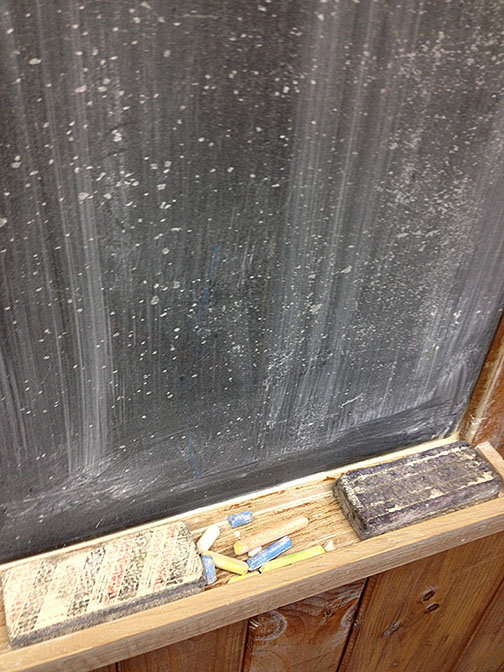
The New Cool Thing at School
I recently was visiting the Mountain School in upstate Vermont. This is a program for students in their junior year of high school. The school offers its 45 students the experience of working and living on a fully functioning farm. There are goats, sheep, llamas, maple tree sap harvesting, greenhouses, collective meal making, shared chores as well as a super dynamic high school core curriculum taught by a group of inspired multi talented teachers that actually live on the farm the whole semester with the students. There is very little access to the Internet and basically zero cell service. For kids my daughters age, 17, this is the first time in their life that they have ever experienced what it feels like to not be spending a good chunk of their day texting and or face booking. I visited recently and my daughter Hannah pulled me into one of the small classrooms specifically to show me something. The classroom was empty and at first I didn’t know what she was so excited about showing me. It was basically an empty classroom. read more…
Objectivity or Not

Raining at Night – 72″ x 72″ 2013
I have been very busy the past few months preparing new work for my first show in NYC in May. I tried to finish a bulk of the work before letting the gallery see it, as I don’t like too much influence. I also don’t entirely know what I am doing or where I am heading in the first few weeks. I say that literally. I honestly cannot imagine what this new body of work will look like. I do sometimes have a vague sense of it—I know that I want it to be better, more sophisticated, more powerful than work I have done before. Usually this means doing less. In other words the better work seems to happen when I am trying less hard. There usually is less thinking in it. If the painting is strong it will appear that it took less work and was easier to make but often it is quite the opposite. There will be numerous repainting and lots of do overs but the final result has to look fresh and inspired. It can’t be tired and have the slightest feeling of tedium.
I have noticed that sometimes I can get a body of work quite close to being done but then I find that I momentarily lose my sense of objectivity and cannot tell what is done and what is not. I simply have been too close to it.
This is a good time for the gallery to visit. Not that they are the gatekeepers of what is good or finished. But the reaction of someone who is walking in fresh is useful. Generally the paintings I am positive about, they are too. “Wow! that one is great.” Then they look at the one next to it and nod and say, “Yes, this is looking good too.” Which translates to—Not quite as good as the one I just exclaimed over but it will do. Then I can always tell if they are definitely feeling like this one is falling flat because they will usually say, ” Is this one done?” Which gives me an out because I can say, ” not really, not quite” even though I did considered it finished till that very moment. What I love is that anyone, including gallery owners, don’t exactly know why something is good or not (this understanding falls in the artist’s court) but they do have a fully functioning set of sensibilities and when something is powerful it moves them and they say “Wow, I love this” and when they aren’t they say “ Is this done yet?”
So I then have a long look at what I might consider done and they consider not quite done and sometimes I am right and sometimes not. The important thing in all of this is understanding that often we can’t be objective entirely about our work. Usually the more we struggle, the longer we spend on something the more easily we can lose sight of what exactly the work feels and looks like, even to us. The gift of objectivity – and it truly is a gift – sometimes can be summoned from the maker of the work. However sometimes true objectivity can come in the form of someone else who wanders into the studio stops in front of your latest painting and says “Wow” or regrettably, “Is this one finished?”
OBJECTIVITY
I have been very busy the past few months preparing new work for my first show in NYC in May. I tried to finish a bulk of the work before letting the gallery see it, as I don’t like too much influence. I also don’t entirely know what I am doing or where I am heading in the first few weeks. I say that literally. I honestly cannot imagine what this new body of work will look like. I do sometimes have a vague sense of it—I know that I want it to be better, more sophisticated, more powerful than work I have done before. Usually this means doing less. In other words the better work seems to happen when I am trying less hard. There usually is less thinking in it. If the painting is strong it will appear that it took less work and was easier to make but often it is quite the opposite. There will be numerous repainting and lots of do overs but the final result has to look fresh and inspired. It can’t be tired and have the slightest feeling of tedium. read more…
The Language Within Art
One of my mentor clients asked an interesting question the other day. It had to do with how an artist develops a personal visual vocabulary. We all recognize or know artist’s work that already has this occurring. In fact this is one of the reasons why we recognize it as mature and authentic. The language being used is highly personal. It has to first develop within the artist and then, over time, the world sees it and because of it’s authenticity, places a high value on it. But how does this happen?
How does an individual’s language make the translation from strictly verbal, auditory common sounds, to a more personal visual one?
The answer, I believe, has to do with time. Over many years, a lifetime perhaps, there is a process that the artist goes through that converts her language into symbols or certain kinds of marks. For example if the artist is uplifted by an idea regarding nature then, if it is important enough, the artist sometimes abbreviates it into a particular mark. Maybe the feeling becomes an abstracted leaf shape. This abbreviation or mutation from the literal thing, to a feeling and then into a visual mark seems to happen as a result of having the same idea or feeling repeatedly. If we want to show or create a feeling of a thing from our life, then we can use almost any symbol, and if when we see it we can feel the same feeling that the original thing caused us to feel in the first place. For example, I use the infinity sign and in my work it means unlimited possibility. When I draw that shape in my work and leave it there, I am reminding myself of a truth that I know exists and because of this and it’s reassuring nature, I want to experience it often. In other words, it drifts through my day and when it does, especially when I am painting, I notate it for myself by drawing or carving this particular infinity sign. Of course in the beginning, nobody else understands. But over time, even if people don’t literally understand, I think they can recognize when a conversation is occurring.
It is almost as if over time we are creating a secret world with it’s own language. In time, people wandering into this personal visual language become engaged too. They even might assign new meanings or certainly modify yours to better fit their own. And then, amazingly, using this new language, a dialogue begins.
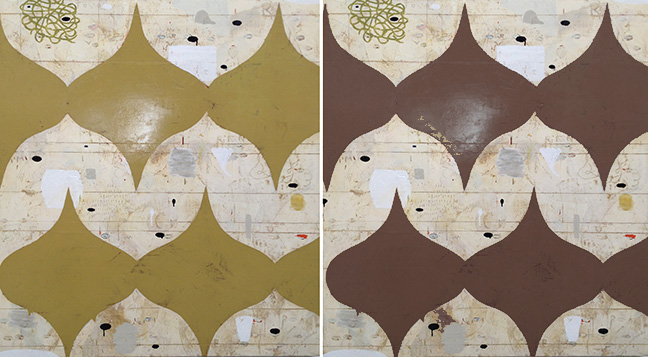
Wrong.Again.
Yesterday I spent part of my day painting large shapes in a painting I thought I was improving. I chose a color that I thought was appropriate and worked. I went to lunch and when I came back and looked at the painting I couldn’t believe that the color I had chosen was so hideous. It was the color of dog poop.
How is it possible that with so much experience I can still make complete and utter mistakes? It amazes me.
I spent the good part of half an hour sitting in a chair looking at the painting wondering why and how I could go so hopelessly wrong…and then I understood. I had painted the biggest shapes, the most noticeable shapes in the painting, a dark color. The background is a light color so the dark shapes show up very strongly.
All the subtlety in the light background area of the painting could not be noticed because the contrast of the large dark shapes were so different that they were unrelated and overpowered all the delicate subtleties that were in the background.
Wrong. Again.
Yesterday I spent part of my day painting large shapes in a painting I thought I was improving. I chose a color that I thought was appropriate and worked. I went to lunch and when I came back and looked at the painting I couldn’t believe that the color I had chosen was so hideous. It was the color of dog poop.
How is it possible that with so much experience I can still make complete and utter mistakes? It amazes me.
I spent the good part of half an hour sitting in a chair looking at the painting wondering why and how I could go so hopelessly wrong…and then I understood. I had painted the biggest shapes, the most noticeable shapes in the painting, a dark color. The background is a light color so the dark shapes show up very strongly.
All the subtlety in the light background area of the painting could not be noticed because the contrast of the large dark shapes were so different that they were unrelated and overpowered all the delicate subtleties that were in the background.
I am trying to make the relationships feel sensitive and sophisticated in my work. These very dark shapes on this light background were unrefined and very clumsy.
I don’t want to visually sledgehammer somebody over the head with what I’ve made.
So the answer was that the largest shapes don’t have to be the most contrasty shapes because they all are already very large. The contrast could be much, much less. We will still see them and by making them less noticeable even though they are lighter in value we will still see them they won’t be such a visual sledgehammer. Once I appointed the shapes the right value (the lighter yellow green color) then suddenly the background subtleties became more apparent and the painting begins to work. Now it is not done but this was an interesting development.
I don’t know how many times I will have to relearn and relearn what I seem to already know but I guess that is just the way this process goes. In a way, this is why it is so worthwhile.
The Language Within Art
One of my mentor clients asked an interesting question the other day. It had to do with how an artist develops a personal visual vocabulary. We all recognize or know artist’s work that already has this occurring. In fact this is one of the reasons why we recognize it as mature and authentic. The language being used is highly personal. It has to first develop within the artist and then, over time, the world sees it and because of it’s authenticity, places a high value on it. But how does this happen?
How does an individual’s language make the translation from strictly verbal, auditory common sounds, to a more personal visual one?
The answer, I believe, has to do with time. Over many years, a lifetime perhaps, there is a process that the artist goes through that converts her language into symbols or certain kinds of marks. For example if the artist is uplifted by an idea regarding nature then, if it is important enough, the artist sometimes abbreviates it into a particular mark. Maybe the feeling becomes an abstracted leaf shape. This abbreviation or mutation from the literal thing, to a feeling and then into a visual mark seems to happen as a result of having the same idea or feeling repeatedly. If we want to show or create a feeling of a thing from our life, then we can use almost any symbol, and if when we see it we can feel the same feeling that the original thing caused us to feel in the first place. For example, I use the infinity sign and in my work it means unlimited possibility. When I draw that shape in my work and leave it there, I am reminding myself of a truth that I know exists and because of this and it’s reassuring nature, I want to experience it often. In other words, it drifts through my day and when it does, especially when I am painting, I notate it for myself by drawing or carving this particular infinity sign. Of course in the beginning, nobody else understands. But over time, even if people don’t literally understand, I think they can recognize when a conversation is occurring.
It is almost as if over time we are creating a secret world with it’s own language. In time, people wandering into this personal visual language become engaged too. They even might assign new meanings or certainly modify yours to better fit their own. And then, amazingly, using this new language, a dialogue begins.
Talented or Not?
This morning was the first day of a new workshop at Esalen. One of the most challenging issues for everyone is this nagging uncertainty about whether we have talent or not. This is especially true for those considering extending themselves into a creative endeavor for the first time.
Haven’t we all wondered whether we are truly talented?
It is the most defeating of feelings when you start down that road that leads to self-doubt. I hate that place and rarely go there anymore.
What I reassure people (and yes, myself too) again and again is that talent, in fact has little to do with anything. Especially art. I said this last night on the very first evening in the workshop; it takes a while for this to sink in. After all, this idea that some of us are “gifted” and others not, has been drummed into our heads for years. Parents, schoolteachers, friends and even other artists get involved in perpetuating this myth.
I have been involved in teaching art and helping people re find their creativity for 25 years and from my experience I have discovered that amazing artwork, incredible ingenuity and creativity comes out when ANYONE takes the time to learn and express themselves from a place of authenticity. Simply said, powerful artwork is made by people who have learned to communicate their individuality in a way that is in alignment with what they love and are passionate about. If there IS one ingredient needed for the making of “genius” artwork I would say without a doubt it would be passion. When you combine individuality (and we are all individuals!) with passion and a measure of vulnerability and risk then amazing surprising artwork arrives.
Talented?
This morning was the first day of a new workshop at Esalen. One of the most challenging issues for everyone is this nagging uncertainty about whether we have talent or not. This is especially true for those considering extending themselves into a creative endeavor for the first time.
Haven’t we all wondered whether we are truly talented? It is the most defeating of feelings when you start down that road that leads to self-doubt. I hate that place and rarely go there anymore.
What I reassure people (and yes, myself too) again and again is that talent, in fact has little to do with anything. Especially art. I said this last night on the very first evening in the workshop; it takes awhile for this to sink in. After all, this idea that some of us are “gifted” and others not, has been drummed into our heads for years. Parents, schoolteachers, friends and even other artists get involved in perpetuating this myth.
I have been involved in teaching art and helping people re find their creativity for 25 years and from my experience I have discovered that amazing artwork, incredible ingenuity and creativity comes out when ANYONE takes the time to learn and express themselves from a place of authenticity. Simply said, powerful artwork is made by people who have learned to communicate their individuality in a way that is in alignment with what they love and are passionate about. If there IS one ingredient needed for the making of “genius” artwork I would say withou






